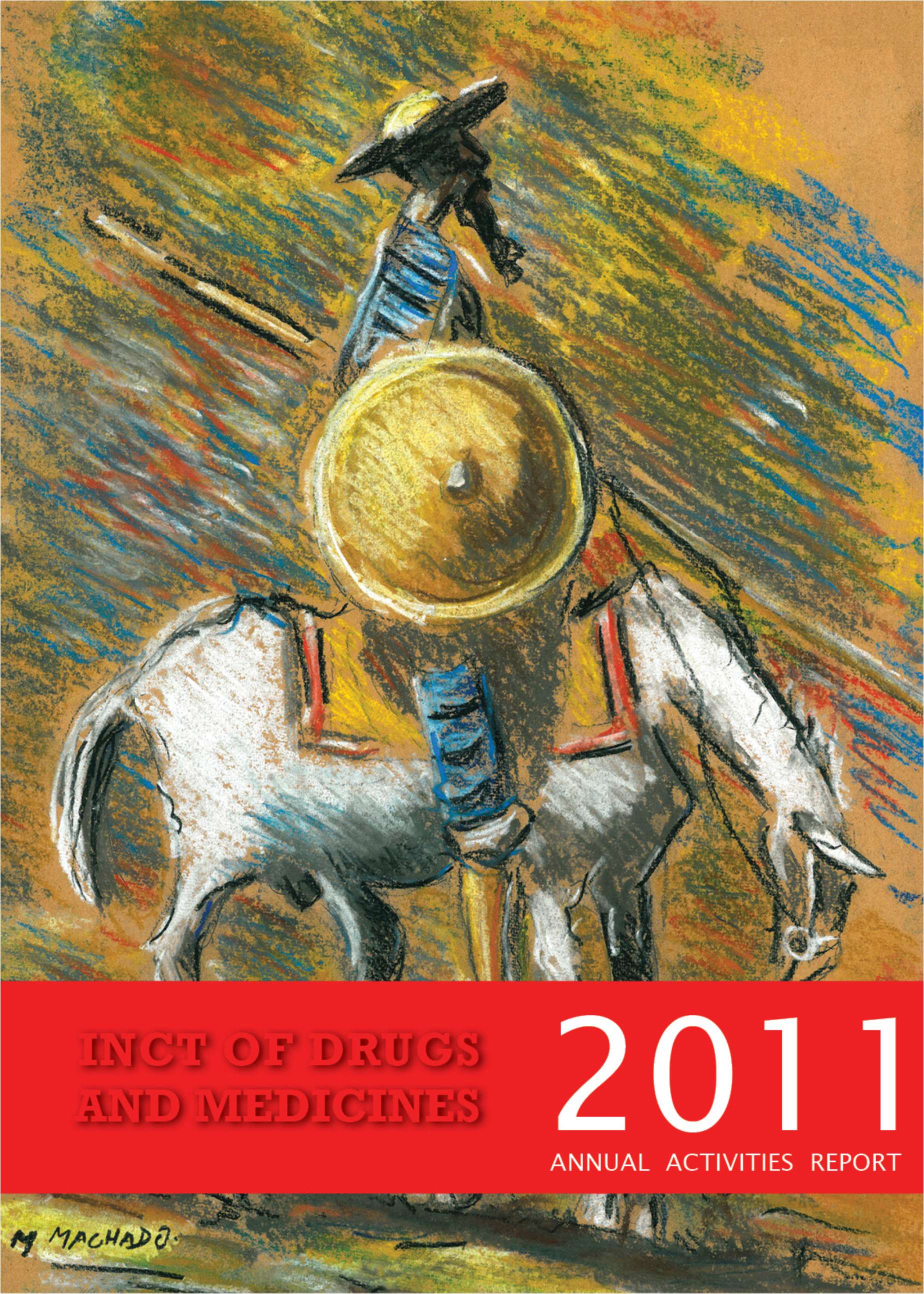This is the third edition of the Annual Activities Report of the National Institute of Science and Technology in Drugs and Medicines (INCT-INOFAR), describing the activities conducted during 2011. We have chosen the same format as the one used in the previous years, including the results of the research subprojects in radical innovation in drugs as well as of those relating to incremental innovation, in accordance with our mission and vocation.
In the field of radical innovation, design, planning, synthesis and evaluation of substances candidate for new drugs, we act in six areas, compatible with the expertise of the teams associated with the INCT-INOFAR network, which include inflammation, pulmonary disease, especially chronic obstructive pulmonary disease, pain, central nervous system, cardiovascular system, as well as chemotherapy for cancer and antiparasitary, especially leishmaniasis. In this radical innovation environment, we have achieved significant results, especially in the subprojects classified as advanced in the chain of drug innovation. Nevertheless, all the other subprojects have seen significant progress that has led us to conclude, in our V Follow-Up and Evaluation Meeting, in November 2011, that we need to reorganize the INCT-INOFAR portfolio for the following two years, according to the previously established timeline.
INCT-INOFAR established, on November 18, 2011, a cooperation agreement with the Interdisciplinary Center of Pharmacogenomics and Pharmaceutical Research (ICEPHA) of the University of Tübingen, Germany. Through this deal, we broaden the international scope of INCT-INOFAR and the bases for scientific exchange and the development of innovative research projects in new drugs. On the other hand, the agreement establishes the organization of scientific and academic activities, like courses, conferences, seminars, symposiums, or lectures, and the exchange of researchers and/or students, as well as the exchange of materials and publications of mutual interest.
In the field of incremental innovation, we have achieved very valuable results that have crowned the efforts of the research groups led by Professors Angelo da Cunha Pinto of the Institute of Chemistry at UFRJ and Luiz Carlos Dias, of the Institute of Chemistry at UNICAMP, who by supervising the work of Doctors Barbara Vasconcelos Silva and Adriano Siqueira Vieira, at UFRJ and UNICAMP, respectively, have concluded the synthesis of two important drugs, sunitinib and fluoxetine, respectively. The first is an important tyrosine-kinase inhibitor, still under patent, indicated for the control of stomach cancer, with countless judicial sentences that force the national health care system (SUS) to spend a significant amount of money to carry out. The route developed, at a bench scale (2g), represents a significant contribution to the full verticalization of the chain of generic medications, representing a synthesis technology capable of being scaled and transferred to the business sector, public or otherwise, in case the Ministry of Health decides to support it. We understand that the synthesis of this important anticancer drug supports, in a significant manner, a future political decision by the Brazilian government on the issue. The second drug, fluoxetine, which does not have an effective patent, represents another contribution by the research group to led by Professor Dias (UNICAMP) to our technological qualification in generic drugs, because it is an important resource in the treatment of central illnesses. Still in the environment of incremental innovation, we also achieved, in 2011, a patent request for the synthesis route developed by the same group for atorvastatin , described in our AAR-2010. Considering that atorvastatin is the most valuable drug in the market, a member of the HMGCoA-reductase inhibitors, which made Pfizer worldwide, during the patent monopoly (1991-2001), during the time the patent monopoly was effective (1991-2001), a total of US$ 120 billion. Considering this is the biggest best seller in the history of drugs, and that its patent was voided in November 2011 in its main world market and a few months before that in Brazil, it then became the most promising and coveted generic drug, since the branded drug (LipitorTM), sold, worldwide, US$ 13 billion just on the last year the patent was effective. The synthetic route developed by INCT-INOFAR greatly surpasses the efficiency and yield of the original one described by Pfizer, so this patent request represents an important technological property created by INCT-INOFAR, deserving future scaling and transfer to the drug industry sector.
There were countless activities carried out by INCT-INOFAR during this time referring to education, promotion, and increasing awareness of pharmaceutical sciences, and they are listed in a bilingual booklet, which is available in our portal (www.inct-inofar.ccs.ufrj.br/revista). We highlight the booklet on the correct and rational use of medications in general (http://www.portaldosfarmacos.ccs.ufrj.br/) and most of all, the second booklet, on antibiotics (http://www.portaldosfarmacos.ccs.ufrj.br/). This second booklet was made available at the site for the Brazilian regulatory agency (ANVISA), and it will have an animated version produced by INCT-INOFAR, currently under production. O INCT-INOFAR keeps the Pharmaceutical Portal updated (http://www.portaldosfarmacos.ccs.ufrj.br), a web page where it publicizes its activities and publishes articles on topics related to drugs and medications (http://www.portaldosfarmacos.ccs.ufrj.br/).
I wish that this volume of the Annual Activities Report of the National Institute of Science and Technology in Drugs and Medicines (INCT-INOFAR), describing the activities developed in 2011, is a pleasant and easy read, as well as a perpetual reference source.
Rio de Janeiro, June 2012.
Eliezer J. Barreiro
INCT-INOFAR Coordinator



